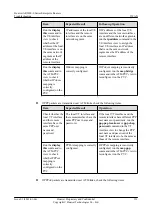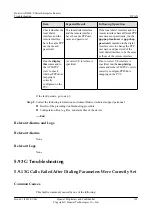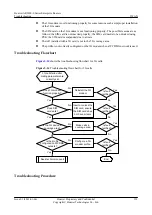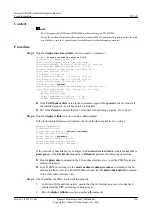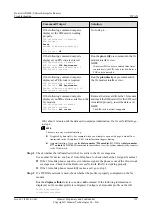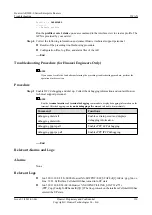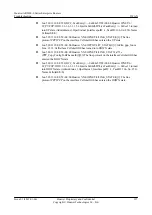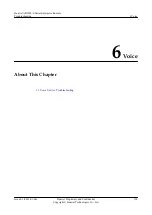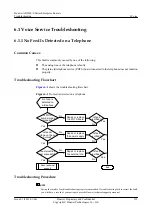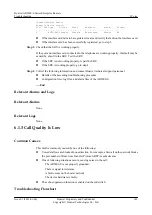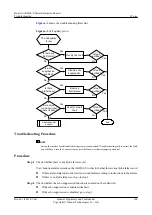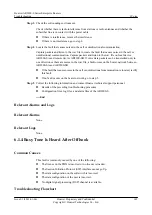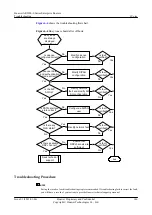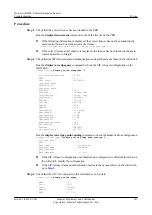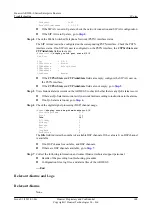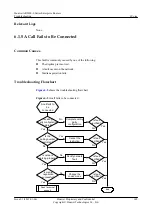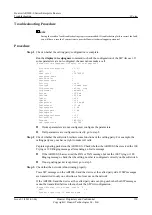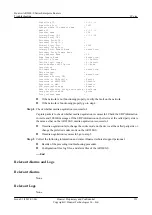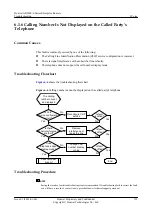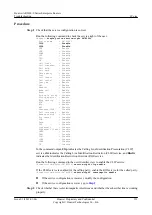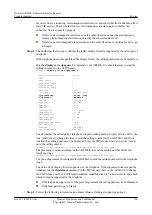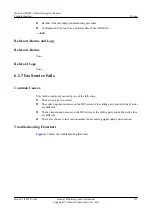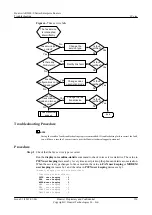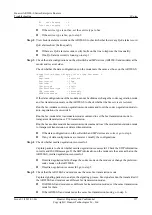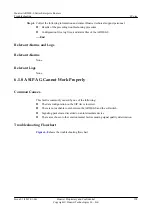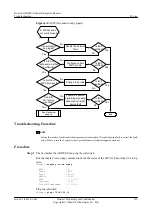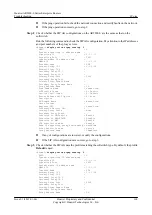
Step 3
Check the surrounding environment.
Check whether there is radio interference from stations or radio antennas and whether the
subscriber line is in contact with the power cable.
l
If there is interference, remove the interference.
l
If there is no interference, go to step 4.
Step 4
Locate the fault that causes noises in the call or unidirectional communication.
Capture packets and listen to the wav file to locate the fault that causes noises in the call or
unidirectional communication. Capture packets and listen to the wav file on local device
AR2200-SA and remote device AR2200-SB. If voice data packets can be transmitted only in
one direction or there are noises in the wav file, a fault occurs on the bearer network between
AR2200-SA and AR2200-SB.
l
If the fault that causes noises in the call or unidirectional communication is located, rectify
this fault.
l
If no fault occurs on the bearer network, go to step 5.
Step 5
Collect the following information and contact Huawei technical support personnel.
l
Results of the preceding troubleshooting procedure
l
Configuration files, log files, and alarm files of the AR2200-S
----End
Relevant Alarms and Logs
Relevant Alarms
None.
Relevant Logs
None.
6.1.4 Busy Tone Is Heard After Offhook
Common Causes
This fault is commonly caused by one of the following:
l
The license on the PBX is incorrect or no license is loaded.
l
The Session Initiation Protocol (SIP) interface cannot go Up.
l
The data configuration on the softswitch is incorrect.
l
The data configuration of the user is incorrect.
l
No digital signal processing (DSP) channel is available.
Troubleshooting Flowchart
Huawei AR2200-S Series Enterprise Routers
Troubleshooting
6 Voice
Issue 01 (2012-01-06)
Huawei Proprietary and Confidential
Copyright © Huawei Technologies Co., Ltd.
145

